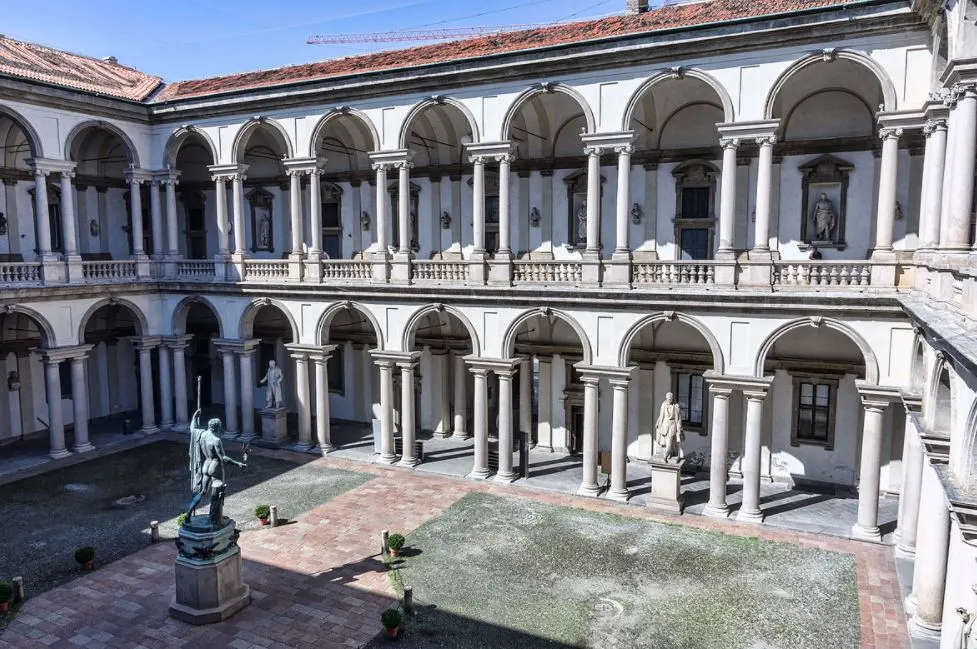When it comes to monumental banquet scenes, Paolo Veronese (1528-1588) can easily be described as the ultimate master of this genre. His paintings were in high demand as the Mannerist artist had the unique ability to make these scenes come to light using a distinctive color palette.
Let’s take a closer look at some of the most interesting facts about “The Feast at the House of Simon the Pharisee,” one of the huge works of art in the oeuvre of Veronese that has several interesting stories to tell.
1. It was commissioned to decorate a monastery in Venice
Paolo Veronese was one of the leading artists of the Venetian School of the 16th century, together with his contemporaries Titian and Tintoretto.
He distinguished himself as a supreme colorist and although his Late Renaissance style is considered to be lacking depth today, it was highly popular back in his time. This allowed him to earn a copious amount of commissions to decorate buildings all around Venice.
This painting was commissioned by the Hieromytes for the monastery of the Chiesa di San Sebastiano. This Renaissance structure was completed in 1562 and Veronese completed The Feast at the House of Simon between 1567 and 1570.

2. It was painted a decade after he produced his most famous feast scene
Veronese didn’t shy away from painting monumental works of art that decorated entire walls of buildings. This also meant that he had to fill these immense spaces with a large number of figures.
He became famous in Venice after completing “The Wedding at Cana” in 1563 one of his ultimate masterpieces. This painting was commissioned to decorate the refectory of the San Giorgio Monastery near the famous Church of San Giorgio Maggiore in Venice.
It hung there until the late 18th century as well. It was moved to Paris by French troops in the aftermath of the French Revolution and is now one of the major attractions at the Louvre Museum in Paris.
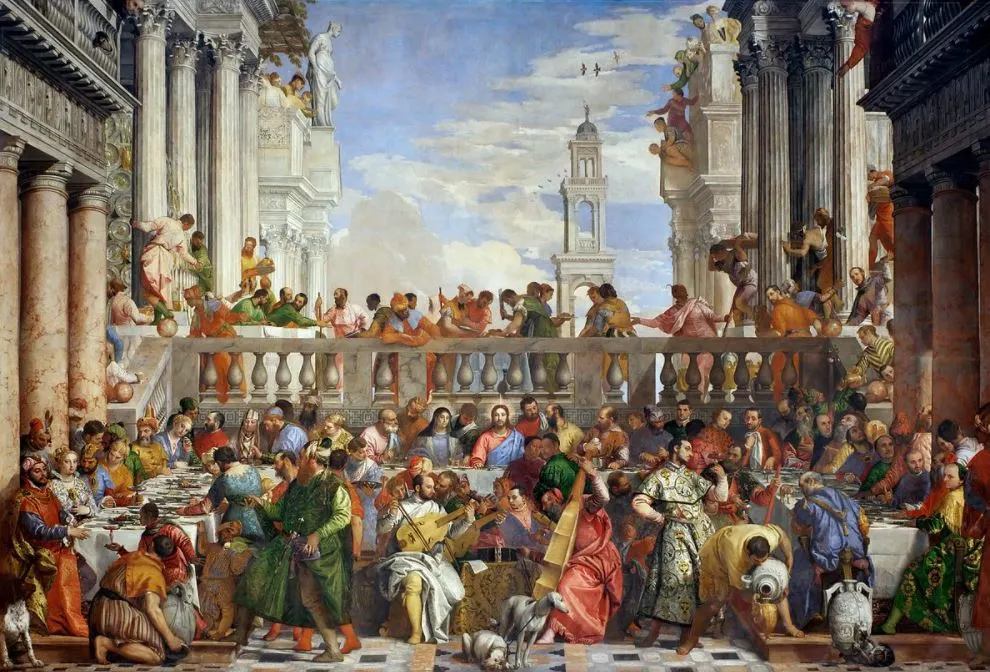
3. It depicts a dinner at the house of Simon mentioned in the Gospel of Luke
The story of Simon the Pharisee is mentioned in the Gospel of Luke, more specifically Luke 7:36-50, and revolves around a dinner hosted by Simon. Jesus was invited but Simon didn’t respectfully treat him as he should have which included washing his feet.

This subject came up during the meal when a woman, identified as a sinner, started washing the feet of Jesus. This was the moment that Jesus confronted Simon with his lack of respect.
This story has been a very popular one in the world of art. A famous version painted by Peter Paul Rubens in 1618 can be found at the Hermitage Museum in Saint Petersburg. Veronese himself also painted this subject over a decade earlier in 1556, a work that now hangs at the Galleria Sabauda in Turin, Italy.
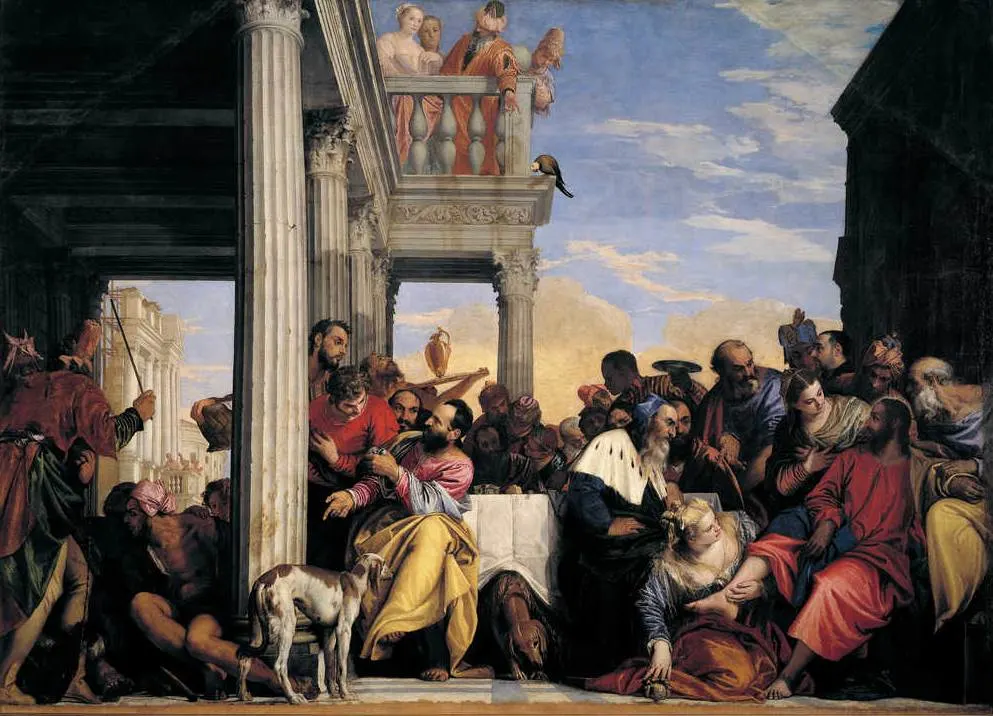
4. The painting features all the elements of Veronese’s other feasts
Although this painting is less colorful than some of the other banquet scenes that he produced, it features a large number of people common to these types of paintings.
Another recurring element in Veronese’s banquet scenes is the architectural details that he included. These were inspired by the leading Renaissance architect at the time, the Influential Andrea Palladio (1508-1580). His style is defined by classical models derived from ancient Greek and Roman structures and Veronese eagerly included these into his paintings.
This is not surprising as both men worked together on a project called the Villa Barbaro in the 1560s. Palladio completed the design of this villa in the Veneto region and Veronese painted frescoes to decorate the interior.
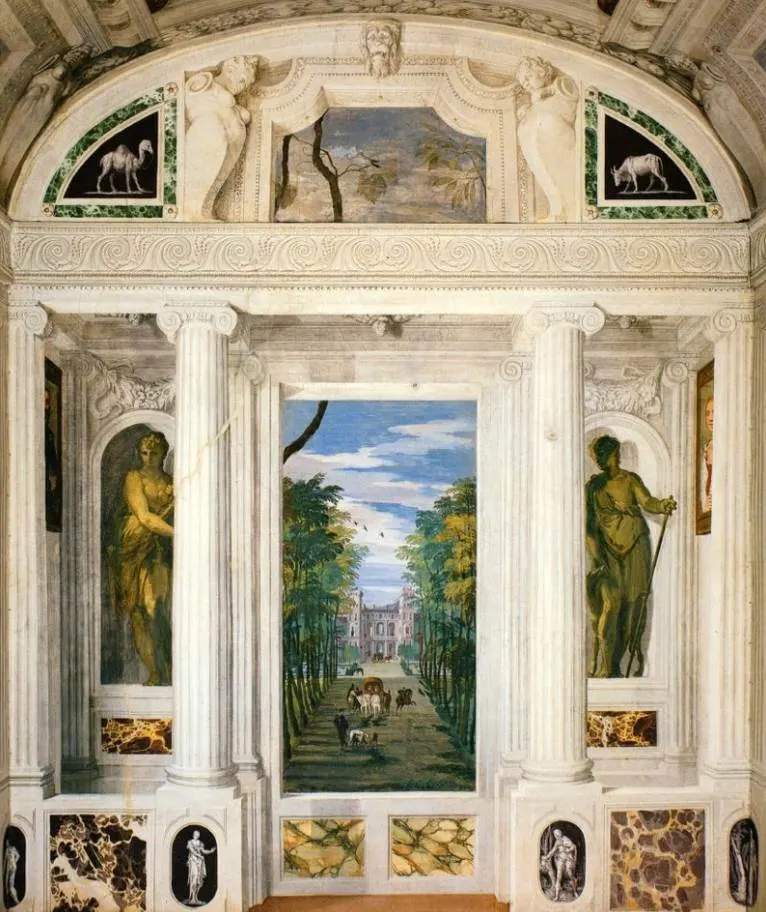
5. It was one of the paintings that got Veronese in trouble in 1573
Everything was going well for Paolo Veronese until he produced a work that was intended to be his version of the Last Supper. He painted another monumental banquet scene in 1573 that was intended to decorate the refectory of the Basilica di Santi Giovanni e Paolo in Venice.
The Catholic counter-reformation was ongoing at the time and he took it a bit too far by including monkeys and drunkards in this traditional religious scene that takes place the night before Jesus was crucified.
You didn’t want to get yourself in trouble with the religious police during this period, that’s for sure. He got off easy as he simply changed the title of the work to “The Feast in the House of Levi” and his reputation as a respected artist did the rest.
What’s remarkable is that elements of The Feast in the House of Simon the Pharisee were also mentioned at his Inquisition trial in 1573. These included the animals and various secular details that he integrated into this work.
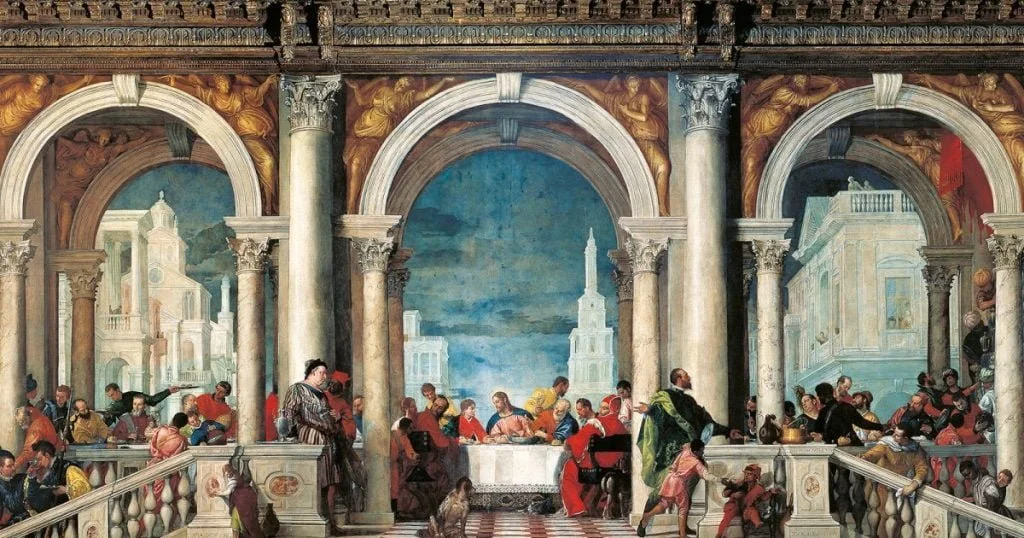
6. Veronese decorated the church of the monastery and was buried there
The Chiesa di San Sebastiano was built following a terrible plague that swept through the city halfway through the 16th century. It’s one of 5 churches in the city that were built for this reason.
It was dedicated to Saint Sebastian and the interior of the church is heavily decorated with frescoes and panel paintings related to the life of Saint Sebastian. Most of these were produced by Paolo Veronese himself between 1555 and 1570, shortly after the church was completed.
What’s remarkable is that Paolo Veronese was also buried in this church when he passed away in 1588. His tomb can be found on the lefthand side of the church which is located in the southwestern part of the city.
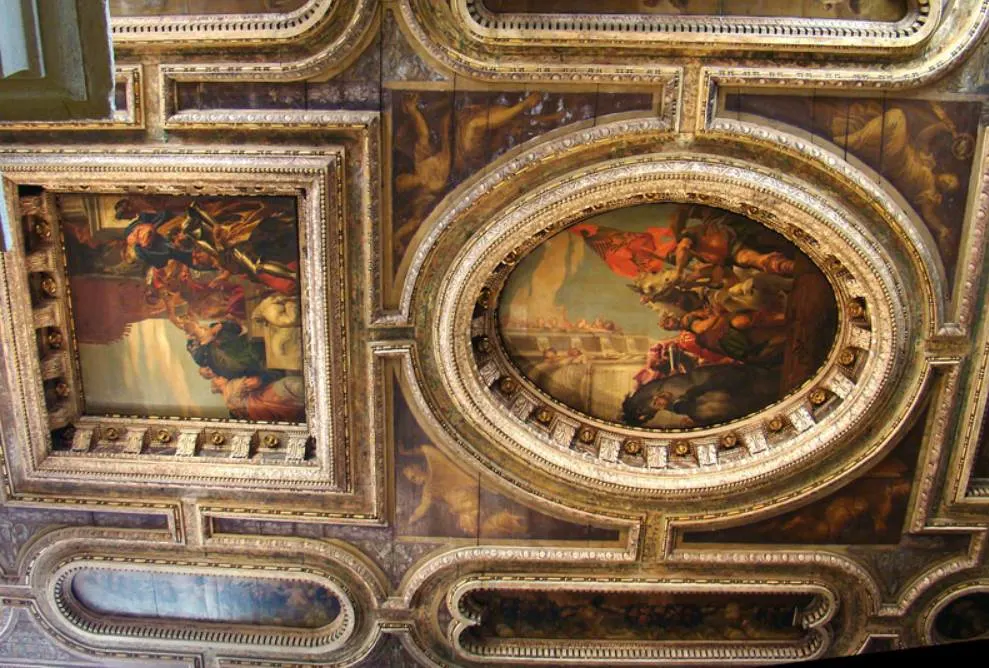
7. How big is The Feast in the House of Simon the Pharisee?
The artist’s banquet scenes were of monumental scale, and this one is no different. Although it’s not as big as some of his other works, it still has dimensions of 275 × 710 centimeters (108 × 280 inches).
8. Where is the painting located today?
The Feast in the House of Simon the Pharisee suffered the same fate as The Wedding at Cana as it ended up being confiscated by the French in the late 18th century. It didn’t make it to Paris, though, so it can still be admired in Italy today.
The painting isn’t located in Venice but made its way to Milan following the final fall of Napoleon in the year 1817. It’s now on public display in the most famous museum in the city, the Pinacoteca di Brera in Milan.
